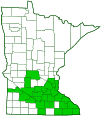Kentucky coffee tree
(Gymnocladus dioicus)
Conservation • Description • Habitat • Ecology • Use • Distribution • Taxonomy
Conservation Status |
|
|||||||
| IUCN Red List | not listed |
|||||||
| NatureServe | N5? - Secure SNR - Unranked |
|||||||
| Minnesota | Special Concern |
|||||||
Description |
||
Kentucky coffee tree is a medium-sized, moderate-growing, deciduous tree that rises on a single trunk from a fibrous root system. In Minnesota mature trees are usually 50′ to 70′ tall and up to 24″ in diameter at breast height, though large individuals can reach over 80′ in height and 29″ in diameter. It is moderately long-lived, often lasting 75 years, though healthy individuals on favorable sites may survive 100 to 150 years. It spreads by root suckering, often forming interconnected colonies. Unlike most plants in the Pea (Fabaceae) family, the roots do not have nodules. When growing in open areas the trunk is short, straight, and stout. It usually splits into three or four stout, ascending, principal branches about 10′ to 15′ above the ground. The crown is rounded and open. The branches are coarse, crooked, and widely spreading or weakly ascending. In forested areas the trunk is longer, the crown is narrow and pyramidal, and there are fewer, shorter branches. The bark on young trees is light brown and smooth. It quickly breaks into conspicuous, large, flaky scales. On mature trees the bark is silvery gray, often tinged reddish, thick, and shallowly grooved, with scaly ridges that curl outward at the edges. On older trees the bark is dark gray and thick with shallow fissures and flat ridges. The twigs are widely spaced and very stout. They are not noticeably zigzag. They are grayish-brown with whitish patches, hairless, and covered with scattered orange or pale dots (lenticels). The pith is large. homogeneous (not spongy), and orangish-red. The leaf scars are large, broad, and more or less heart-shaped. They have 3 or 5 large bundle scars. The tip of the twigs are tapered to a blunt point and there are no terminal buds. Lateral buds are small, inconspicuous, ¼″ to ⅜″ long, and bronze. They appear in groups of 2 or 3 above the leaf scars. They are deeply sunken in raised craters that are filled with silky hairs. The leaves appear in mid-spring before the flowers. They are the largest leaves of any tree in Minnesota. They are also the latest to appear in the spring and one of the first to drop in autumn. They are deciduous, alternate, 12″ to 36″ long, up to 24″ wide, and bipinnately compound with 40 to 100 leaflets. They are on stout, 4″ to 8″ long, hairless leaf stalks. They are pinnately divided into 4 to 7 primary divisions (pinnae), each with 4 to 6 pairs of leaflets. The lowest pair of pinnae are sometimes replaced with a pair of leaflets. The leaflets are alternate, egg-shaped to broadly elliptic, ¾″ to 3½″ long, and ⅝″ to 2″ wide. They are usually rounded, sometimes broadly angled, at the base, and taper to a point at the tip, usually with straight sides along the tip, sometimes concave very near the tip. The upper surface is medium or dark green and hairless. The lower surface is pale green and finely hairy, at least along the veins. The margins are untoothed and have an inconspicuous fringe of short hairs. In early autumn the leaves turn yellowish-gold before dropping. Male and female flowers are usually borne on the separate trees. Sometimes a tree with flowers of one gender will have some inflorescences with both flowers of that gender and bisexual (perfect) flowers. They appear when the leaves are unfolded in late May to late June. The inflorescence is a 2¾″ to 8″ long, ascending or spreading, unbranched array (raceme) of 18 to 50 flowers at the end of a short branch. The flowers are about ¾″ long and are borne on ⅜″ to 1⅜″ long stalks. They have 5 sepals, 5 petals, 10 stamens, and 1 style. The sepals (calyx) are petal-like, greenish-white, linear, and ¼″ to ⅜″ long, shorter and narrower than the petals. They are moderately to densely hairy. The petals are greenish-white, narrowly oblong, and 5 ⁄16″ to 7 ⁄16″long. They are densely covered with woolly hairs. The stamens are two alternating series, one long and one short, with hairy filaments and yellow anthers. The style is short. The fruit is a 3″ to 6″ long, ¾″ to 2″ wide, ⅜″ to ⅝″ thick, leathery, more or less oblong, flattened, straight or curved pod with 1 to 7 seeds. The pod is yellowish and velvety-hairy at first, later turning turn brown woody. The fruit ripens in Autumn and remains on the tree through the winter. The seeds are ⅝″ to ¾″ long and embedded in a green jelly-like pulp. |
||
Height |
||
50′ to 70′ |
||
Record |
||
The champion Kentucky coffee tree in Minnesota is on public property near Owatonna, in Steele County. In 2009 it was measured at 68′ tall and 138″ in circumference (44″ in diameter). |
||
Flower Color |
||
greenish-white |
||
Similar Species |
||
Habitat |
||
Moist to moderately moist. River terraces above the flood plain. Full sun. Not shade tolerant. Well drained soil. |
||
Ecology |
||
Flowering |
||
Late May to late June |
||
Fruiting |
||
The large fruit pods of Kentucky coffee tree are probably an adaptation to large mammals of the Pleistocene epoch. Horses, giant sloths, mastodons, and mammoths were present on the North American continent for millions of years. They probably ate the pods and dispersed the seeds in their scat. They disappeared in the Late Pleistocene extinction event, 20,000 to 10,000 years ago, when all large mammals (over 2,200 pounds) in North America went extinct. |
||
Pests and Diseases |
||
Kentucky coffee tree is relatively disease and pest resistant |
||
Use |
||
|
||
Distribution |
||||
|
Sources |
|||
| 5/3/2023 | ||||
Nativity |
||||
Native to Wisconsin, Iowa, and South Dakota |
||||
Occurrence |
||||
Uncommon or rare |
||||
Taxonomy |
|||
| Kingdom | Plantae (Plants) | ||
| Division | Tracheophyta (Vascular Plants) | ||
| Subdivision | Spermatophytina (Seed Plants) | ||
| Class | Magnoliopsida (Dicots) | ||
Order |
Fabales (Legumes, Milkworts, and Allies) | ||
Family |
Fabaceae (Legumes) | ||
| Subfamily | Caesalpinioideae (peacock flower) | ||
| Tribe | Caesalpinieae | ||
| Genus | Gymnocladus (coffeetrees) | ||
Synonyms |
|||
| Gymnocladus dioica (FNA – misspelling?) | |||
Common Names |
|||
Kentucky coffee tree Kentucky coffee-tree Kentucky coffeetree |
|||
Glossary
Bipinnate
Twice pinnate. Divided into leaflets that are further pinnately divided.
Calyx
The group of outer floral leaves (sepals) below the petals, occasionally forming a tube.
Lenticel
A corky, round or stripe-like, usually raised, pore-like opening in bark that allows for gas exchange.
Linear
Long, straight, and narrow, with more or less parallel sides, like a blade of grass.
Perfect
Referring to a flower that has both male and female reproductive organs.
Pinna
The primary division of a compound leaf or fern frond. Plural: pinnae.
Pinnate
On a compound leaf, having the leaflets arranged on opposite sides of a common stalk. On a bryophyte, having branches evenly arranged on opposite sides of a stem.
Raceme
An unbranched, elongated inflorescence with stalked flowers. The flowers mature from the bottom up.
Sucker
A basal shoot rising from the roots or from a bud at the base of a shrub or tree.
Visitor Photos |
|||||
Share your photo of this plant. |
|||||
| This button not working for you? Simply email us at info@MinnesotaSeasons.com. Attach one or more photos and, if you like, a caption. |
|||||
Randy |
|||||
Kentucky coffeetree flower, Freeborn Co., Minn., June 2017 |
|||||
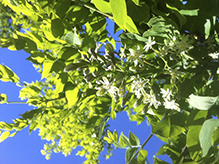 |
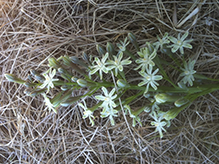 |
||||
Old growth Kentucky coffee tree stand, including a long dead fallen giant, west of Faribault, MN, October 2016 |
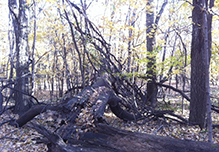 |
||||
Kentucky coffee tree in Owatonna, MN in July 2016 |
|||||
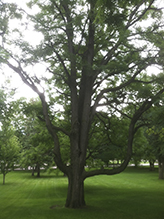 |
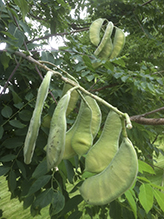 |
||||
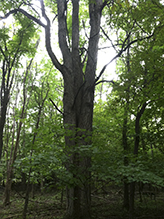 |
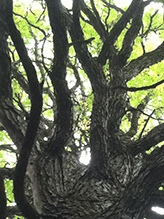 |
||||
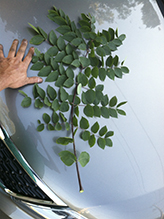 |
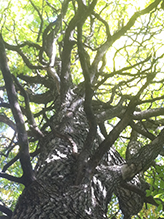 |
||||
MinnesotaSeasons.com Photos |
|||||
|
|||||

Slideshows |
||
| Gymnocladus dioicus Blake C. Willson |
||
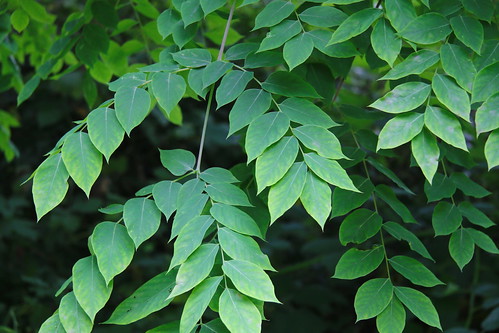
|
||
About
Kentucky Coffeetree |
||
| Gymnocladus dioicus Angie Holmberg |
||
About
Published on Jul 29, 2014 Description |
||

Visitor Videos |
|||
Share your video of this plant. |
|||
| This button not working for you? Simply email us at info@MinnesotaSeasons.com. Attach a video, a YouTube link, or a cloud storage link. |
|||
Other Videos |
|||
| Gymnocladus dioicus VT Dendrology |
|||
About
Published on Apr 12, 2016 Kentucky coffeetree |
|||
| Trees with Don Leopold - Kentucky coffeetree ESFTV |
|||
About
Published on Nov 4, 2011 |
|||
| Kentucky Coffee Tree.mov Kimberly Wade |
|||
About
Uploaded on Sep 9, 2010 Richard Weber, owner of Springhouse Gardens in Nicholasville, Kenucky, talked about the Kentucky Coffee Tree during the Tree Walk at The Lexington Cemetery. The Lexington Cemetery is home to 200 species of trees. |
|||
| how to identify Gymnocladus dioicus Laura Deeter |
|||
About
Uploaded on Oct 2, 2008 short movie on the key id features |
|||
| Great Trees Trail: Kentucky Coffeetree MortonArboretum |
|||
About
Published on Oct 9, 2014 Joe Rothleutner, Tree Improvement Specialist, discusses the Kentucky Coffeetree on The Morton Arboretum's Great Trees Trail. |
|||


Created: 7/20/2016
Last Updated:
